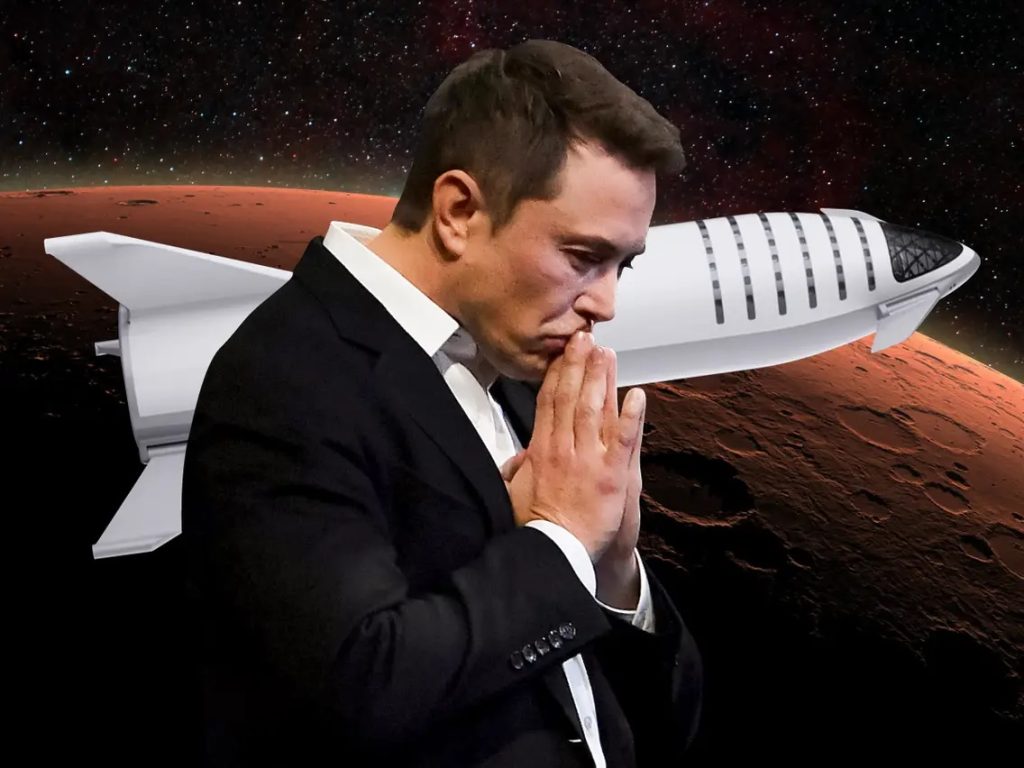Although many countries are currently struggling with economic problems, humanity is also pursuing projects that will strengthen its existence in the world despite all the troubles, wars and problems, and even enable it to open up to the Solar System. As the oil and raw material resources in the world are depleted, global warming continues to increase and the climate and environmental balance of the world changes, it becomes a kind of logistical necessity for humanity to continue its existence outside the world. I have stated in my previous articles that the building blocks of the first lunar settlement will begin in 2030. China and the USA are in a serious race and competition for the moon on this issue. However, on the one hand, humanity has started planning beyond this and the planet Mars seems to be the next possible target.
So what makes the planet Mars interesting? Why is the planet Mars the target after the moon for humanity? First of all, the next stop on the way to deep space is the planet Mars. In this sense, it is already the logically correct choice, but it is also a very important factor that it has a more docile atmosphere compared to the planet Venus, which is located on the other side of the world. Many scientists believe that the atmosphere of Mars can be repaired in the future by a method called “terraforming”, and Mars stands out as a planet where a second base can be established after the moon.
Therefore, the goal of sending humans to Mars stands out as one of the most exciting and challenging projects in space research. Various space agencies and private companies in the world are working intensively to reach Mars. NASA, SpaceX and many other organizations aim to organize human missions to this planet and are trying to create different strategies. Each of them is developing different strategies and technologies, which shows that the effort to make it possible to reach Mars is a multi-dimensional process.
NASA Mars Missions
NASA is pointing to the 2030s, which is in line with its goal of carrying out a human mission to Mars. Since the 1970s, NASA has had many important missions related to Mars. In particular, the Curiosity vehicle, which landed on Mars in 2012, has provided important information about the surface of the planet. In addition, the Perseverance mission, launched in 2020, has undertaken the task of collecting samples to search for signs of life on Mars and to prepare the ground for future human missions. NASA’s long-term plan is to start with the Artemis Program, which is a return to the Moon project, and to test the technologies necessary for human flights to Mars by establishing a sustainable living space there. The base to be established on the Moon will be considered a staging area for fuel and other supplies needed during the journey to Mars.
SpaceX and Mars
Another important player is SpaceX, founded by Elon Musk. Elon Musk believes that humanity should become a multi-planetary species and therefore sees going to Mars as one of his biggest goals. SpaceX’s most notable project is the giant rocket system called Starship. This rocket is designed to be able to travel to Mars and to carry a large number of people and materials. Starship aims to be a completely reusable system and thus aims to significantly reduce costs. Musk emphasizes that this technology is vital to realize his dream of establishing a colony on Mars. SpaceX aims not only to go to Mars but also to establish a self-sufficient settlement there. According to Musk, establishing a colony of 1 million people on Mars would be the best way to prevent the destruction of the Earth in the face of a possible disaster.
 Although Elon Musk’s vision is considered ambitious by many both technologically and financially, SpaceX has achieved very important successes in space technologies to date. The company has revolutionized space transportation by successfully launching and landing its Falcon 9 rocket. If Starship successfully reaches Mars, this technology will allow for both larger payloads and regular flights to Mars in the long term. Musk’s aim to make a manned Mars journey by the end of the 2020s is generating great interest all over the world. However, there are many technical challenges to achieving this goal. Mars’ harsh atmospheric conditions, radiation risk, and the sensitive technologies required to land on the planet are major obstacles to this goal.
Although Elon Musk’s vision is considered ambitious by many both technologically and financially, SpaceX has achieved very important successes in space technologies to date. The company has revolutionized space transportation by successfully launching and landing its Falcon 9 rocket. If Starship successfully reaches Mars, this technology will allow for both larger payloads and regular flights to Mars in the long term. Musk’s aim to make a manned Mars journey by the end of the 2020s is generating great interest all over the world. However, there are many technical challenges to achieving this goal. Mars’ harsh atmospheric conditions, radiation risk, and the sensitive technologies required to land on the planet are major obstacles to this goal.
On the other hand, Mars missions are not limited to projects led by NASA and SpaceX. Organizations such as ESA (European Space Agency), CNSA (China National Space Administration), and Roscosmos (Russian Space Agency) are also conducting important studies on Mars. China sent a rover to Mars with the Tianwen-1 mission in 2021, and this success strengthened China’s ambitious position in space exploration. Following Tianwen-1, the rover named Zhurong, which explored Mars, demonstrated China’s capacity to land on the surface of Mars and conduct long-term research there. Such developments simultaneously trigger competition and cooperation in Mars research and accelerate humanity’s efforts to reach the Red Planet.
One of the biggest obstacles to the Journey to Mars is to transport people to the planet and bring them back safely. Long-term living in space has serious effects on human health in a zero-gravity environment, and radiation poses a great threat to astronauts. For this reason, both NASA and other space agencies are working to overcome these difficulties before sending people to Mars. In particular, NASA’s long-term manned missions to the International Space Station (ISS) make significant contributions to studies in this field. The long-term missions that astronauts spend on the ISS help to better understand the physiological and psychological difficulties that will be encountered during the journey to Mars.
As a result, the goal of reaching Mars is considered a great challenge for humanity and the greatest test of space exploration. The intensive efforts of NASA, SpaceX, CNSA and other space agencies are critical to the realization of this dream. Under the leadership of Elon Musk, SpaceX’s innovative technologies and NASA’s long-term strategies are taking important steps towards making Mars accessible for a human mission. At the same time, the work of the Chinese Space Agency also shows that there is serious competition for transportation to Mars. The journey to Mars is not only a technological achievement, but also has a deep meaning for the fate of humanity. Achieving this goal will pave the way for humanity to establish a sustainable future in space.




































Add Comment